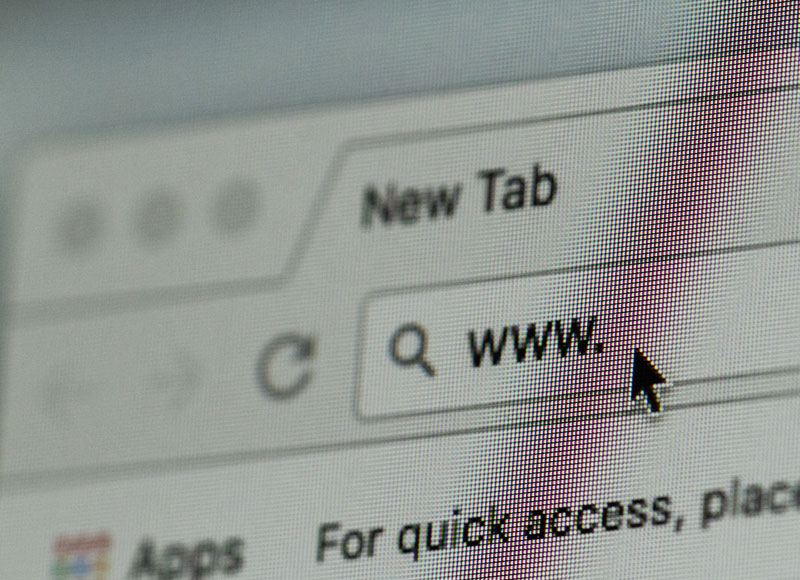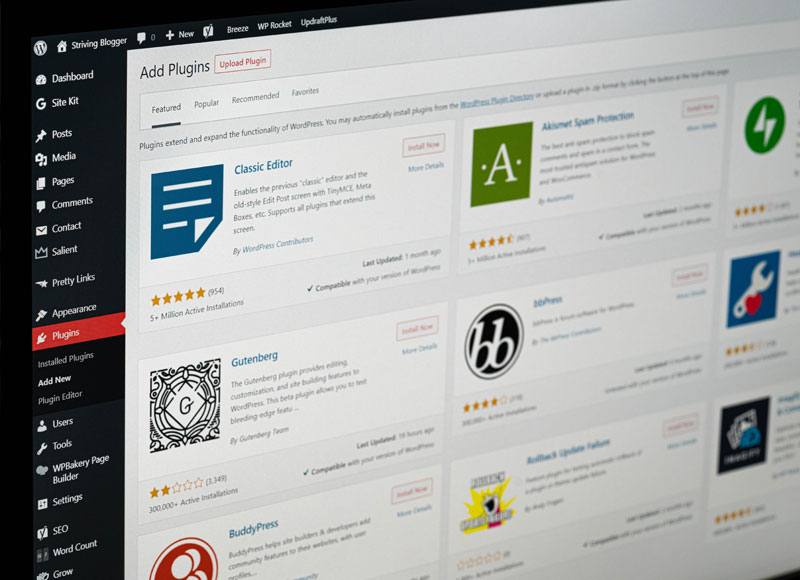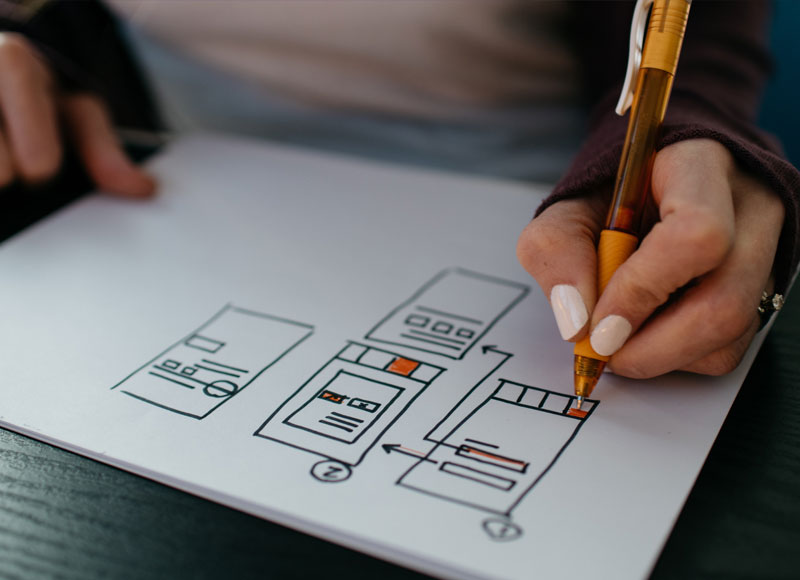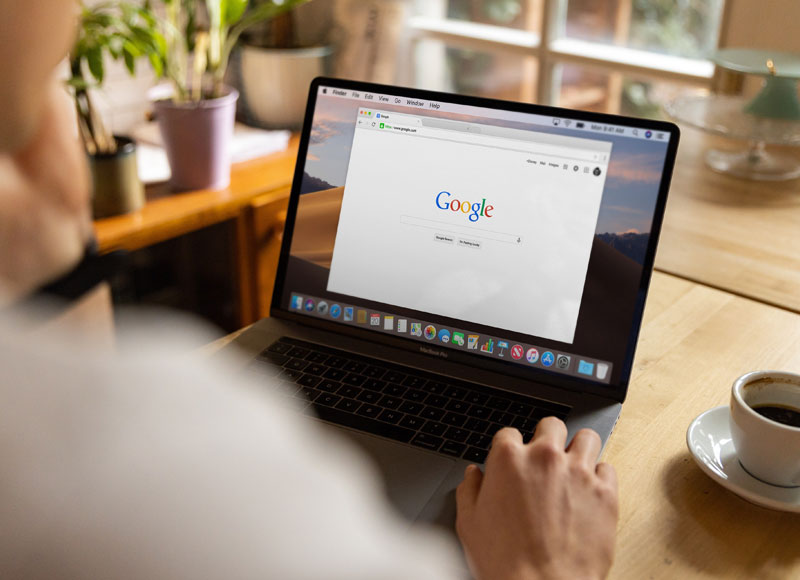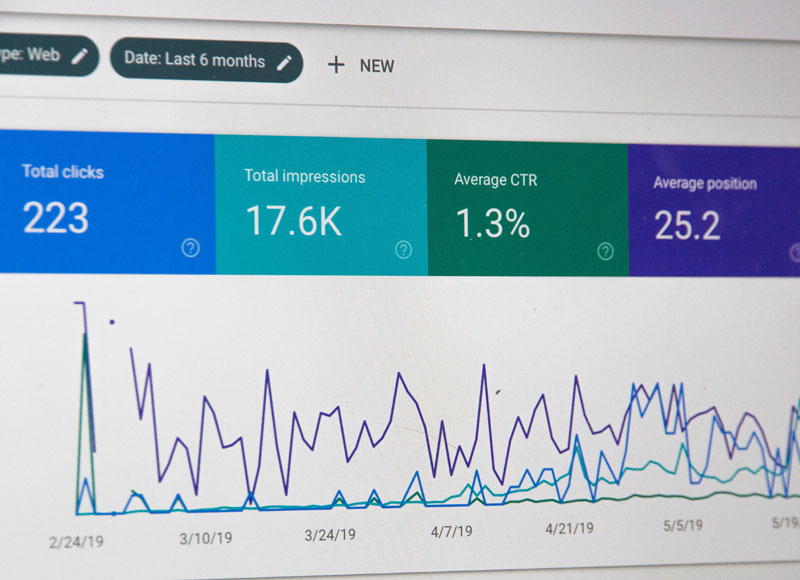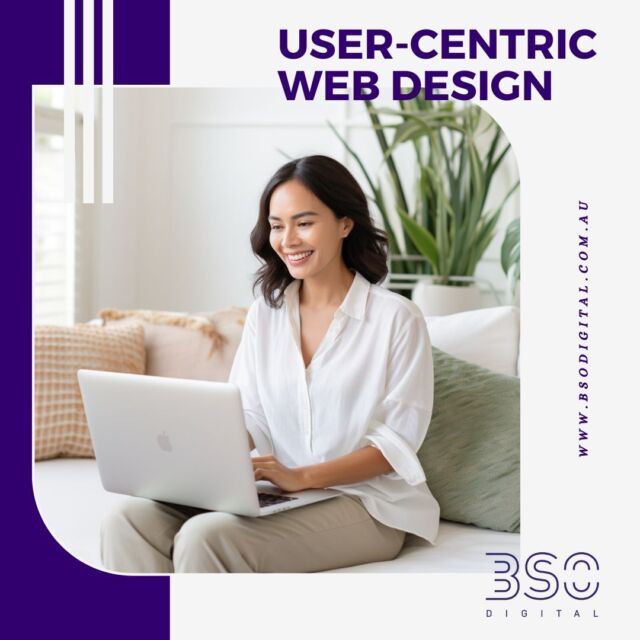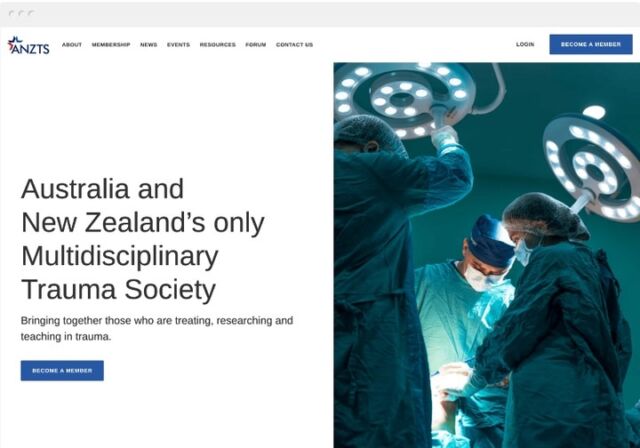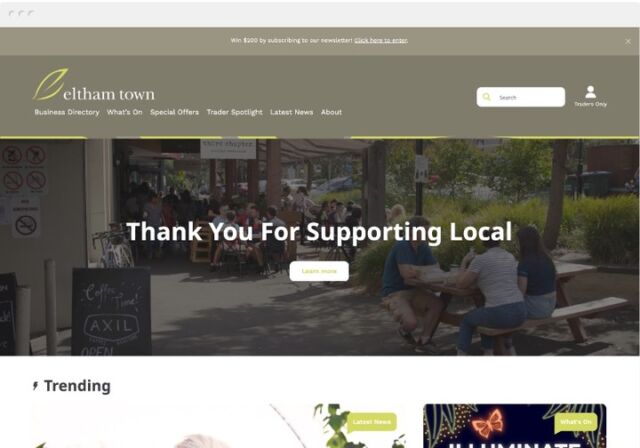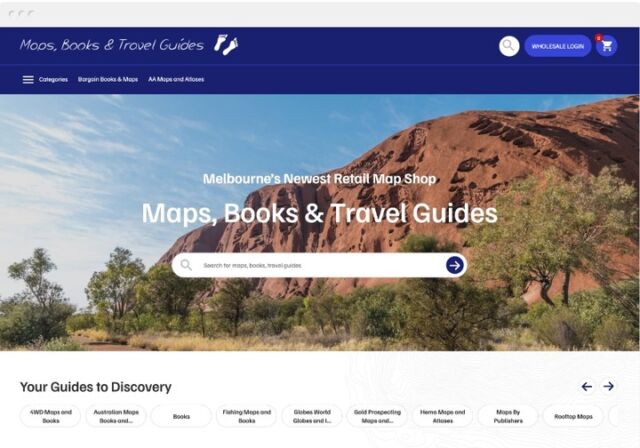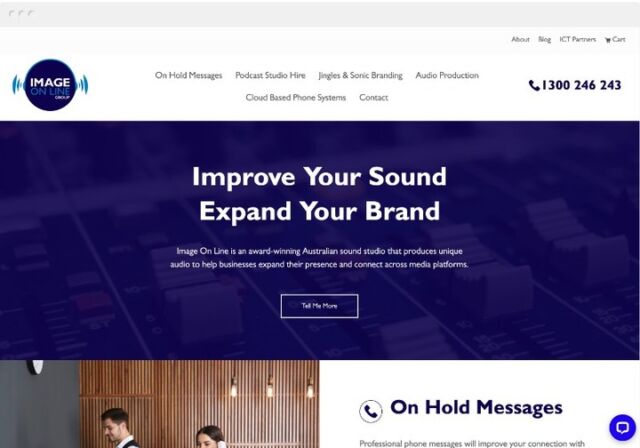As we’ve seen through 2020 and 2021, having a small business website is imperative when people can’t reach your brick and mortar stores. No matter what kind of business you do, a great website is now essential for your company’s success. If you’re looking to start your business website, our 30 fundamental steps to set up a small business website have you covered.
1: Create a Digital Business Strategy
Before you begin building your website or contacting a web development agency, you need to have a digital business strategy. Without one, you won’t have an effective online presence, regardless of what web options you choose. Your digital strategy should:
- Outline what you want to achieve online and how you want to achieve it
- Clearly define responsibilities
- Create a road map for your business’s future
This will give you control of your online business’s future and success and guide the creation of your website.

2: Decide on the Type of Website
After creating your digital business strategy, you need to decide what type of website is the best website for small businesses. There is a wide range of websites to choose from, and you need to make the best choice based on your business and your digital business strategy. Types of websites include:
eCommerce
This is a website where people can buy your products.
Business
This is a website that represents a specific business.
Entertainment
This includes webcomics, Buzzfeed, and other similar sites that are made purely for information.
Portfolio
This is a website designed to display examples of an artist/photographer/writer’s work for potential clients.
Media
A media website focuses on posting news articles and similar stories. They can also be online branches of other media properties.
TV/Streaming
These are sites like Netflix that allow you to stream media content through a variety of devices.
Non-Profit
A non-profit website gives charities and non-profits an online presence that not only expands their presence but helps them find a larger pool of donors.
Educational
These are websites that provide online educational courses or represent educational institutions.
Infopreneur
These websites aim to sell information products in the form of courses, tutorials, ebooks, or videos.
Personal
These websites include personal blogs, photo diaries, and vlogs that people want to share with the world.
Web Portal
This type of website is designed for internal purposes for a business, organisation, or institution, like a university.
Wiki
This is an informational website where multiple users can collaborate on content and make their own tweaks and changes as they see fit.
Blog
This type of website is written to provide information on a specific topic and is usually linked to another website, such as a business or eCommerce site.
Membership
These types of websites offer paid memberships to view content. Many of them have different levels of membership, too.
Crowdfunding
These websites allow users to post a passion project and request donations from other users to get their game/technology/book/etc. off the ground.
News or Magazine
These sites keep people up to date on news and entertainment, similar to “old school” paper magazines and newspapers.
Forums
These websites are designed to provide an organised way to publish topic discussions from registered users or members.
3: Obtain a Good Domain Name
Your domain name, or website address, is the entry point for your website. It must make a good impression for usability purposes as well as for search engine optimisation or SEO. It is worth taking the time to research your domain name as it is a powerful promotional tool. When it comes to deciding on a domain name, you should take into consideration the following:
- Make it easy to spell
- Keep it as short as possible
- Use the right domain extension – .com, .au, .net, .gov, .edu, .org, etc.
- Avoid numbers and hyphens
- Make the address broad to facilitate future growth
- Ensure it is memorable
- Research the domain name to see if it is similar to existing domain names and does not contain registered trademarks
- Check if the price is right
- Avoid nonsensical names
- Create an SEO-friendly URL
4: Purchase Secure, Scalable Web Hosting
Website hosting is a company that offers the technology and services necessary for a website to be viewed online. You connect your domain name to your hosting provider so that when users visit your URL, they are shown your website that you store on your hosting account. Hosting costs will vary depending on the kind of technology and support you choose.
Cheaper hosting will often put you on a crowded server where you can experience a lot of downtimes and are at risk of viruses from these other websites. More expensive hosting is more likely to offer better technical support and put your website on its own dedicated server or a server with fewer websites. This helps your website experience less interruptions.
You will need a web hosting service, so choose one based on your business needs. And to be publicly available, your website needs to be stored on a server that is constantly connected to the internet.
5: Choose a Content Management System
A content management system or CMS is a program or application used to create and manage digital content. A good CMS will help you build and maintain your site, and you don’t need much technical knowledge to use it. You should choose a CMS that is ideal for your business needs and budget.
BSO Digital uses the world’s most popular CMS, WordPress. It has a vast, active support community and many useful plugins to extend the functionality of your site. And if you can’t find the right plugin, there are many excellent developers – like those at BSO Digital – who can custom make plugins and functionality to ensure your website runs the way you want it to. WordPress is open source and relatively simple to install, and it isn’t hard to find a website developer or web agency that can work with you on your site.
6: Choose a Good eCommerce Platform
Are you planning on selling goods or services through your website? Then you need the right technology to do so. If you want to make financial transactions online, you need the right platform to do so. BSO Digital recommends WooCommerce, the world’s most popular eCommerce platform that turns your WordPress website into an online store. Much like WordPress, there are millions of plugins available, and it is extremely flexible. There are also plenty of web developers and web agencies willing to work with WooCommerce to help bring your online store to life.
7: Create an Interesting, Memorably, and Engaging Website UX
You want your business user interface to give a positive impression that drives the right results. As a business, you want to drive your users to where you want them to go, i.e. purchase items, services, contact, etc. You can do this by:
- Using easy to read fonts
- Choosing complementary graphics
- Compressing and optimise images for fast loading
- Researching your competition and implement similar components
- Staying consistently on-brand through your web design
- Researching your target audience to see what they want from your site
- Designing an intuitive navigation system
- Publishing easily accessible contact information
- Incorporating obvious call-to-actions
- Create standard pages
8: Optimise Your Website for SEO
SEO or search engine optimisation is a set of practices to apply to your website to ensure search engines index and rank your website and then show it to users. Once your website is crawled by search engines, it begins competing with other websites with similar content. The better your web design, content, and SEO, the higher you rank on the search engine results page or SERP. Good SEO includes the following practices:
- Keyword research and implementing it on your site
- Clean website code
- Fast loading speed
- An SSL certificate
- A responsive/mobile-friendly site
- High-quality backlinks
- Internal links
- Social media
- Positive online reviews
- Good content
Excellent SEO is essential to your website’s ongoing progress and success and can mean the difference between showing up on the first page of the SERP or not showing up at all.
9: Setting Up Webmaster Tools
You can use vital data to help you analyse traffic and site performance by setting up Google Analytics, Google Search Console, and Google Tag Manager. These tools are used to track the following types of information about your website:
- Daily, weekly, and monthly visitors to your site
- Number of views on each page of your site
- The bounce rate of users (Google give higher ranking to websites that have a low bounce rate)
- Average time visitors spend on the site
- Crawl errors on your site
- Broken links on the site
- The keywords that lead users to your site
- Backlinks to your site
- Web page download time
10: A Clear Description of Your Business
It is important to tell users who you are and what you do so users aren’t confused when visiting your website. Make sure your hero banner – or homepage banner image – and any subsequent banners – are visual representations of your services. You should also have an introductory blurb near the top of the page that describes who you are and what you do. Ensure your content is clear and SEO optimised for best results. You should also make sure both your main and footer navigation have a link to an About Us page so users can read more about your business in-depth.
11: Off The Shelf Template or Custom Web Design?
Your next important choice is choosing between an off the shelf template or a custom design. A pre-built template is the easiest option and can be loaded by yourself without needing a web design agency. However, using a template means your website will look like other websites online. They can also pose security risks and hacking risks if the template’s creator does not continue updating the template to meet WordPress’s security update requirements.
While a custom web design is a little more expensive, it means you will have a unique website for your business. It will be branded and designed to your needs and won’t look like any other site online. The design can be custom coded to meet all your needs, unlike templates where you are stuck with features of the template. And custom websites can be constantly updated by your design agency through a maintenance plan.
12: Appropriate Web Design
When it comes to designing your website, you need to take your target audience into account. A plastic surgery website will have a very different look to a charity website, for example. In most cases, you should focus on a lean and clean website that provides a good user experience rather than cluttered, over-the-top visuals. Having too many heavy design visuals can slow down your site and distract your users away from your content and calls to action.
If you want to sell products or services online, your web design needs the basic features of an eCommerce website. The online market is competitive, no matter what kind of website you have. So you cannot ignore the major design principles that give you the competitive edge. These are:
Responsive Design
Also known as mobile design or mobile-friendly design, this is vital in the modern world. 80% of Australians access the internet on their smartphones, so your website needs to be responsive so they scale to suit different smart devices. If your website doesn’t scale to fit mobile phones or tablets, then you’re going to get far less engagements and fewer return visitors/customers.
UX Optimisation
User experience or UX is the ultimate key to a successful small business website design. While getting carried away with colours, visuals, and other design elements is tempting, you need to pull back. You need to consider, first, what best serves the user.
Call to Actions
Your website should be designed to funnel your users to your call to action. This is what you want your users to do on your website. This might be filling out a form, contacting you personally, making a purchase, signing up for a class or membership, etc.
13: Building Your Website
Once you have your design in place, there are a number of things to consider when it comes to your website build. This includes:
- Understanding who your customers are
- How your users will use your website
- Check your website design and usability
- Ensure your website is accessible to a range of users
- Make sure your website is mobile-friendly
- Implement your SEO strategy
From there, you can either build your website yourself or approve your website to be built by your web developer. After it is created, you can test the site to ensure it functions properly, make tweaks to ensure everything works, and then begin working on your marketing and SEO strategy to improve your ranking. Remember, you won’t rank overnight. SERP ranking will come with time, and you will need to be patient as Google takes its time to crawl your site.
14: Accessible Contact Details
Unfortunately, a lot of websites fail to provide clear contact details for their users. These days, at the very least, you should have a contact form. For those with a storefront, you should have the name of your business, the address of your physical location, email address, or telephone numbers. Social media accounts also help legitimise your site and give users another way to contact you if they have exhausted all other options or simply prefer to use social media to contact other people.
Your website should feature a separate Contact Us page that can be reached through the main navigation bar and the footer. Some websites might also have a sticky banner on the side of each page, encouraging users to contact them if this is their particular call to action. Your social media should be available somewhere on your site. The footer is the most convenient location. If you are offering a service, it is worth your time to have your phone number/s at the top of each page.
15: Include an About Us Page
These days, users want to connect with a brand. They don’t want to simply buy from you. They want to connect with the people behind the products and services. While this can be done with social media, an About Us page gives you the perfect chance to discuss your product, service, etc., how you got here, how long you’ve been in business, and who you are. You are telling your users a story and drawing them in to engage with you and your product.
If your users feel an emotional attachment to your brand, they are more likely to buy, return to buy more, and recommend you to family and friends. So use that About Us page to your advantage. And remember, always use real photos. Even if you are self-conscious, users are far more willing to connect to real people than stock images. In fact, stock images make you seem inauthentic.
16: Add a Blog
You might think blogs are just for hobbies and family bloggers or for big companies. But in reality, blogs are helpful for all types of websites and businesses, no matter how big or small. If the content in your blogs is useful, uses the right keywords, and is SEO optimised, it could be what helps keep you ahead of your competitors. Google likes to see you constantly updating and adding to your website, and what better way to do that than with a blog.
A blog shows your visitors that you are knowledgeable about your business, services, or products. This works as an excellent trust signal. It plays a crucial part in your online marketing strategy and can bring new customers to your business. Blogs also give you a way to engage with your potential customers. By sharing informative blog posts on social media, you can reach a broader audience and draw more users to your website.
The main page of the blog should give you a list of your blog posts in chronological order. You can also use categories and tags that allow your users to filter blogs to find relevant information. Choose an eye-catching feature image that will encourage readers to engage with your content – this is especially important if you share your blogs on social media. Finally, always use a consistent voice, visual style, images, and fonts, so you keep to a recognisable brand.
17: Social Proof
Having social proof and a social media identity is essential for modern business, no matter how big or small. 85% of customers consider social proof to be as important as personal recommendations. Website design for businesses should include customer testimonials, reviews, client videos, awards, accreditations, and social media. These should be highlighted on your website so users can easily see and access them.
No matter what you choose to use – or what you are allowed to use, as many industries (like the medical industry) are not allowed to use testimonials/reviews – you should inform your web designer in advance. They will need to create a design that properly highlights these elements so that they don’t take attention too far away from your content and call to action.
18: Regularly Create and Publish Quality Content
Content is King. New and quality content is vital to search engines. Google, in fact, outwardly says that actively updating your content encourages the Google bots to crawl your site more often and can boost your SERP position. Unfortunately, it isn’t always necessary to keep updating landing page content. This is where a blog or article page can help you post constant new, quality content on your website. You should ensure your content is focused on your brand, product or industry, uses well-researched keywords, and has been SEO optimised for the best chance to rank.
Testimonials are also a great form of new content to post on your website to keep your website fresh and updated. But no matter what you do, ensure your content uses an appropriate, on-brand tone that people will enjoy reading.
19: A Well-Organised Menu
Having a well-organised menu or navigation bar is essential to your website. You need to give your users a way to navigate your website easily. In fact, 85% of Australians say they prefer to use straightforward, easy to use and navigable websites. Unfortunately, many websites do not set up their menus well, making it challenging to guide users to your call to action. Your menu should appear at the top of every page, not just the homepage, so your user doesn’t constantly have to return to the homepage to find new information.
Users must be able to reach all important pages of your website from the menu. If you have a lot of pages on your website, you can use drop-down menus to consolidate them. Clicking your brand’s logo should take users back to the homepage. Finally, the menu should scale properly on mobile and work perfectly on all smartphones and tablet screens, ideally in a hamburger menu.
20: SSL Certificate
Far too many brands still don’t have a secure site. SSL is essential for any website, even if you’re not selling a product or service. In fact, these days, websites face penalties if they don’t have an SSL certificate and are still running on HTTP. If your site doesn’t have SSL, Google Chrome will show “Not Secure” text beside your URL. This shows your users that your website is untrustworthy and causes serious credibility issues with your website and brand. Google also considers SSL an important factor in ranking. If you don’t have an SSL certificate, this can significantly hurt your SEO.
Finally, any site that is taking users personal data and payment information must have SSL to ensure the security of that data. Once your website has an SSL certificate installed, your URL will change to HTTPS. This means that the data transmitted between your users and your server will be encrypted.
21: Analytics Integration and Conversion Trackers
The main aim of your website is to get targeted users and customers. So you need to be able to analyse customer behaviour on your site to determine how well it is performing. You need to be able to answer a few vital questions:
- How many people are coming to your website?
- What is the source of your site traffic?
- Are these potential customers or just random surfers?
- What is your bounce rate?
- Which pages are getting the most traffic?
- Are customers converting?
By integrating the proper tools into the backend of your website, you will be able to answer these questions more easily. By monitoring your website performance, you can optimise pages that are not performing well or uncover why users aren’t converting. You can do this by implementing various Google products, as we discussed earlier.
22: Website Cost
Website costs will differ depending on what you need. A simple personal website won’t be as expensive to set up and run as a full-on, custom-designed eCommerce website. Most web agencies, like BSO Digital, offer small business website packages in different ranges depending on what you need from a website. It is best to talk to your chosen web design and development agency to get an accurate figure.
There are also many website builders available to use online. Still, unless you have a good understanding of web development, it’s a good idea to hire an agency to design and build the perfect website for you. Remember, the purpose of your website isn’t just to put your mark online. It is to generate interest, leads and create new customers.
23: Launch Your Website
Once your website is built and ready to go, it is time to launch. Your web agency will take your website from a development site to a live site. This means it is now on the internet for all to see. It is essential that you and your agency test your website before and immediately after launch, to ensure everything works. This includes testing links, functionality, forms, and more. Once everything is tested and ready to go, you can let your users on social media know and start marketing your website.
Remember, you won’t immediately rank on search engines after launching your site. It will take time for Google’s bots to come and crawl your site. But with time and good SEO, your site will start ranking.
24: Email Newsletters
Email newsletters are a fantastic way to market to your user base on a budget. These digital newsletters give businesses a way to communicate with customers and leads regularly. Many customers get busy and can forget about a company they were interested in. By sending regular email newsletters, you stay at the forefront of your customer’s minds. By sending out an email newsletter, you can also establish a reputation, strengthen relationships, and move users through your sales funnel. This all increases your chance of being the brand of choice when the customer decides to convert.
Email newsletters are low cost, meaning there is a strong return on investment. They are a simple, convenient digital marketing technique that can be helpful for a busy marketing team.
25: Email Automation
Email automation helps you nurture leads into customers automatically. It plays an important role in your inbound marketing. The great thing about email automation is that, while it does take some time to set up, it is automatic and doesn’t require intervention once it is running. The system nurtures leads to make them more receptive, which benefits your sales team in the long run. You can use coding and user data to ensure your emails are relevant and targeted to the individual recipients. Automated emails can help increase brand awareness with a carefully planned email strategy.
At the end of the day, email automation saves you time so you can focus on other tasks. It helps you reduce costs in the long run and allows you to better target and segment your email mailing lists. By tailoring your emails to your user, you can keep your existing customers interested. And automated email programs, like ActiveCampaign, provide you with more detailed reporting, so you can see how well your campaigns are working and where you need to make changes.
26: Choosing a Web Design Company
When choosing a web design company to work with you and your website, it is important to choose a good, reputable company to work with. By going with a cheap website designer, developer or web agency, you run the risk of doing more harm to your reputation than good. This lowers your credibility in the eyes of your users. It is important to balance quality and affordability when looking for affordable web design for small businesses.
Outsourcing your website and content overseas is also a telltale sign to your customers that you don’t care about your website or credibility. You want clean coded websites that don’t break easily and content that is written in good English. A poorly coded website will often not scale to fit on mobile phones or tablets, making it inaccessible to 80% of Australians who access the internet on their phones.
You want a web design agency that offers expertly coded and designed websites and SEO optimised content. They should also provide responsive design, unique web design, and after-sales maintenance and support.
27: Privacy Policy
With the advancement of the digital age and our online lives, most of us conduct our personal affairs online. Online shopping, official functions, social networking, and job hunting has become part of our everyday life where we often need to provide our personal information. As a result, regulating privacy is becoming more important daily as people constantly fall into the trap of illegitimate websites. That is why it is essential to look for a Privacy Policy when doing any transactions online. And, as a site owner, you should ensure you provide a valid Privacy Policy on your website, outlining how you will be using and storing their information.
A Privacy Policy is a legalised statement that defines how your business handles the personal information it receives from customers or visitors. Having a Privacy Policy is a fundamental right, and it is your liability to your users to show you are trustworthy. Privacy Policies vary from country to country, and many, by law, require you to have the policy on your website. In Australia, the Australian Privacy Principles incorporates 13 principles that describe how personal information should be handled.
28: Terms and Conditions
Another must-have for your website are Terms and Conditions, especially before signing up or buying a product from a website. Terms and Conditions works as a legal document or contract that users agree to before joining or purchasing from your website. This can help you avoid the consequences of misunderstandings and confusion between you and your customers.
Terms and Conditions identify the rights and responsibilities of both parties, such as payment, copyright, price, penalties, variations, refund, return, deliveries, guarantees, liabilities, etc. Without Terms and Conditions, your intellectual property could be at risk. You could also find yourself in multiple liability situations as well as lawsuits.
29: How to Make an Effective Search Bar
Having a search bar is the simplest way for a user to find a piece of information on your website. A basic search consists of an input box and a submission button. Unfortunately, this feature is too often overlooked by website owners making it difficult for users to find the information they’re looking for. Search bars are especially important for large sites and educational sites so users can quickly find the information they need without sifting through hundreds of pages.
A powerful search function gives users more trust in your site as well as a positive experience. This means more returning customers and more sales. If you install a search bar, it must be visible and easily accessible, so users don’t have to search to find it. The box should also have enough space for users to type their queries.
30: Organise a Maintenance Plan
You shouldn’t create your website then leave it to go stale. To have a successful website that ranks well, you need to make sure it is well maintained. Find a web design agency that offers an excellent maintenance plan, like BSO Digital. A maintenance plan should cover:
- Monitoring and reporting on results from your website and campaigns
- Optimise and fix website warnings and errors
- Ensure plugins and WordPress is up to date
- Run security scans and act quickly on hacks
- Work on your SEO via website updates, added content, and blogs
- Keep on top of website trends and make changes as appropriate
- Keep tabs on your competition to ensure you stay ahead of the game
- Backing up your website to ensure there is a copy should something happen
If you are looking to create your first website or need a full re-design and build, contact the team at BSO Digital today. We can help you create the perfect website to suit your needs. Contact us today to get started!

